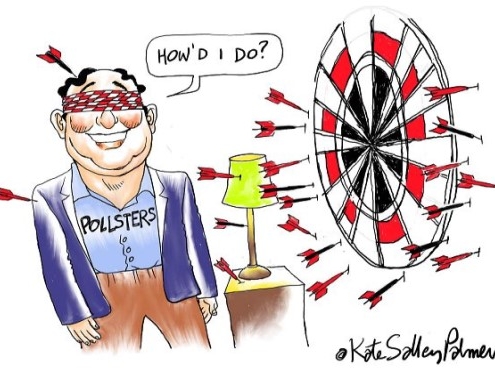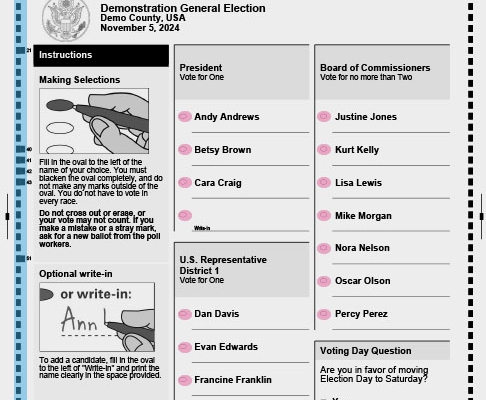One of my favorite arguments against political opinion research in autocracies has been that surveys measure little more than the degree to which state-driven propaganda has penetrated. When voters hear no opposing views in the media and political opponents are marginalized to the point of irrelevance, public opinion almost always favors the autocrat. How could it not?
Wait—wasn’t the internet supposed to have levelled the field? Weren’t social media and messaging platforms supposed to have given oppositional movements the tools to circumvent state-driven communications and reach voters directly?
That argument hasn’t been viable for at least a decade, if it ever was. Even the dumbest autocrats have proven better able exploit the opportunities presented by social media than their less well-organized and -funded opponents. As tools have become more sophisticated, they’ve evolved.
The Savvy Autocrat Uses Disinformation
The predictability of the autocratic media space has vanished. By economically strangling independent media and cultivating dependent media outlets, autocrats have more tools to influence public opinion at their disposal than they did when they dictated content to newspapers, radio and TV stations directly. The autocrat who can combine a nominally “free” but compliant media and hire savvy social media operators who understand the perverse incentives of audience engagement gets a head start.

It’s complicated
The modern autocrat now has extraordinary capacity to shape public opinion, often beneath the radar. Politically-aligned and compliant mass media outlets launder and amplify social media-driven fringe themes, targeted to receptive audiences. When they turn their attention to democratic processes and allies, the results can be devastating. Perhaps you’ve heard of “Stop the Steal.” If not, google it. It’s been in the news. It will serve as a textbook example of how to use disinformation to build public support for solutions to problems that don’t exist.
Unlike in the “old days,” the information environment in autocracies is extremely fluid. Within a country, domestic and foreign players can team up to spread mutually beneficial disinformation. Those players may have aligning, but temporary, political and economic interests; alliances can be transactional. Different messages on different topics can be micro-targeted at diverse audiences with no accountability.
Sometimes just a “firehose of BS” is all that’s needed to confuse citizens and encourage them to check out. True, false or contradictory, disinformation exhausts the audience to the point it concludes “everyone is lying, you can’t believe anything these days.” That’s good enough for those for whom muddied waters count as a victory.
Sink or Swim in Polluted Waters
But let’s say you want to advance a policy, or shore up public support for democratic processes. In a polluted environment, understanding how the public view the issues is important, but it’s only part of the picture. You need also to understand the forces that are shaping their views. This is especially true in backsliding democracies where autocrats benefit from the confused and checked-out population they created.
Here are some key questions to answer and track. What and whose strategic objective is disinformation designed to achieve? What messages are getting traction? Where are they coming from and who are the targets? How are platforms’ punitive actions reshaping the information environment? Governments, businesses and advocacy organizations need to understand this.
“But my topic isn’t terribly controversial or political. Why should I care?” If you are operating in a politicized environment, and your agenda or company has the potential to challenge powerful economic interests, you need to fully understand not only public opinion, but also the potential forces arrayed against you. Knowing this, you can launch your advocacy campaign, voter education program or build your brand knowing in advance where the risks lie and the best way to respond.
Thinking Beyond Traditional Qual and Quant
Strategic disinformation is making the places QGS works in and the topics we work on increasingly complicated. Because we care about actionable data, we’ve been thinking a lot about how to expand the definition of “measuring public opinion” to meet these new realities. Our work on disinformation projects in Ukraine, a testing ground for techniques that are now common everywhere, has taught us a lot about which tool is best suited to answer which question. Because disinformation dynamics are different in every country, there is no one-size-fits-all approach. It’s hard to figure out!
When it comes to measuring the impact of disinformation, traditional qualitative and quantitative are not the only, or the best, tools. It’s a multifaceted problem that requires a multifaceted solution: social media mining, media monitoring, usage studies all help illuminate the sources of disinformation and determine which messages are cutting through and which can be ignored. We can combine these tools to give the fullest picture of your messy information environment.
Contact us and we can help you understand the challenge you’re facing


